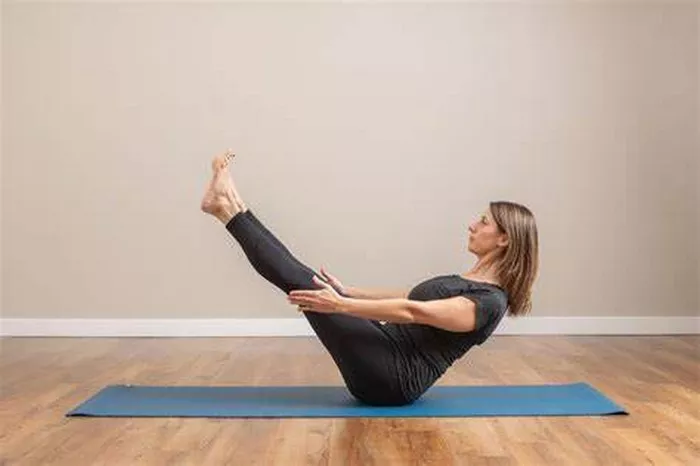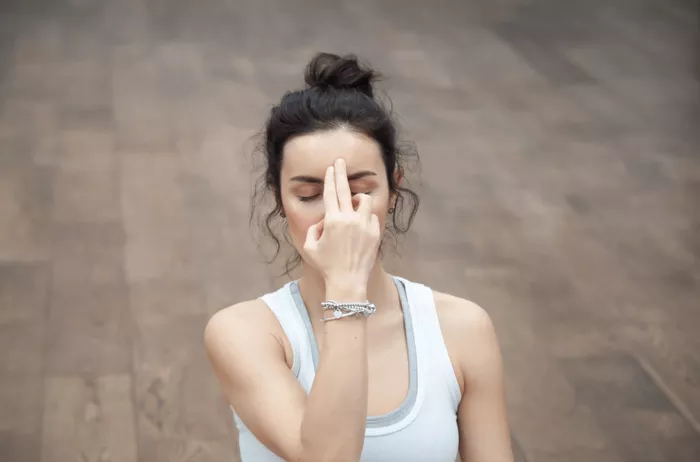Bikram Yoga, often referred to as “hot yoga,” has gained immense popularity in the wellness community for its unique blend of physical challenge and mental focus. Developed by Bikram Choudhury in the early 1970s, this style of yoga is practiced in a heated room with temperatures typically ranging from 95°F to 105°F (35°C to 40°C). The goal is to enhance flexibility, strength, and balance while encouraging deep detoxification through sweat. One of the distinctive aspects of Bikram Yoga is its set sequence of 26 poses, each designed to provide specific benefits to the body and mind. This article will explore how many poses there are in Bikram Yoga, the significance of each pose, and the holistic approach that this system offers.
The Bikram Yoga Sequence: A Brief Overview
Bikram Yoga is characterized by a carefully structured sequence of 26 postures and two breathing exercises. This sequence is performed in a specific order, which remains consistent from class to class. The idea behind this fixed set of poses is that it systematically works every muscle, organ, and gland in the body. The heat and humidity in the room allow for deeper stretches and greater flexibility, while also promoting detoxification through perspiration.
The 26 poses are designed to complement each other, with each posture building on the strength, flexibility, and endurance cultivated in the preceding one. In addition to these 26 postures, Bikram Yoga incorporates two Pranayama breathing exercises, which are integral for relaxation, focus, and energy regulation during the session.
Understanding the Structure of Bikram Yoga
The Bikram Yoga class typically lasts 90 minutes, during which practitioners move through the sequence of poses in a specific pattern. The session begins with a short introduction and two breathing exercises designed to help you connect with your breath and set an intention for the practice. From there, the 26 postures are practiced, and the class ends with another round of breathing exercises. The room is kept heated throughout the practice to promote deep stretching, increased circulation, and sweating.
The 26 Poses of Bikram Yoga
Bikram Yoga is often praised for its simplicity and effectiveness, and the 26 poses are carefully chosen to target various areas of the body. These postures can be categorized into several groups based on their effects on different parts of the body, such as spine, legs, core, and arms. Let’s explore the 26 poses in detail:
Pranayama (Standing Deep Breathing)
Purpose: This breathing exercise is the foundation of Bikram Yoga. It prepares the body for the practice, increases oxygen intake, and promotes relaxation.
How it works: Standing with feet together, the arms are raised overhead, and deep breaths are taken in through the nose while the arms are lifted and then exhaled as the arms lower. This exercise focuses on expanding the lungs and maximizing oxygen circulation.
Half Moon Pose with Hands to Feet (Ardha Chandrasana with Pada Hastasana)
Purpose: This posture improves flexibility and balance while stretching the sides of the body, promoting spinal health.
How it works: Standing with feet together, the arms are lifted overhead and the body bends to each side, creating a crescent moon shape. This pose stretches the lateral muscles of the body, enhancing spinal flexibility and relieving tension.
Awkward Pose (Utkatasana)
Purpose: This pose strengthens the legs, particularly the quadriceps and glutes, while also enhancing balance and concentration.
How it works: Standing with feet together, the knees are bent deeply as if sitting in an invisible chair. The arms are stretched forward parallel to the floor. The pose engages the entire lower body and promotes core stability.
Eagle Pose (Garudasana)
Purpose: This standing posture helps with balance, focus, and flexibility in the legs, hips, and shoulders.
How it works: Standing on one leg, the arms are wrapped around each other and the legs are entwined. This pose improves coordination, balance, and flexibility, particularly in the lower body and upper back.
Standing Head to Knee Pose (Dandayamana Janushirasana)
Purpose: This is a challenging balance pose that strengthens the legs, core, and enhances mental focus.
How it works: From a standing position, one leg is lifted and held with the hands, extending straight while the other leg remains grounded. The goal is to balance on one leg while extending the other leg and keeping the spine straight.
Standing Bow Pulling Pose (Dandayamana Dhanurasana)
Purpose: This dynamic stretch targets the chest, shoulders, and hips, while also promoting balance and concentration.
How it works: Standing on one leg, the opposite leg is bent behind and held with the hand, while the torso leans forward, stretching the chest and creating a bow shape. This pose increases flexibility and strengthens the muscles of the back.
Balancing Stick Pose (Tuladandasana)
Purpose: This pose challenges balance and enhances flexibility, particularly in the hamstrings and hips.
How it works: Standing on one leg, the other leg is extended straight behind as the torso is leaned forward, creating a straight line from the fingertips to the toes. This pose strengthens the legs, core, and back.
Standing Separate Leg Head to Knee Pose (Dandayamana Bibhaktapada Janushirasana)
Purpose: This posture stretches the hamstrings, calves, and spine, promoting flexibility and detoxification.
How it works: Standing with legs apart, one leg is bent while the other is kept straight, and the forehead is lowered toward the knee. This pose improves flexibility in the hamstrings and back.
Triangle Pose (Trikonasana)
Purpose: A classic yoga pose that stretches the legs, hips, and torso while promoting strength and flexibility.
How it works: Standing with legs wide apart, one hand is lowered to the floor while the other extends upward. The body forms a triangle shape. This pose improves overall flexibility, especially in the legs and lower back.
Tree Pose (Vrksasana)
Purpose: A balancing pose that strengthens the legs, particularly the calves and ankles, while improving focus and mental clarity.
How it works: Standing on one leg, the other foot is placed on the inner thigh or calf (but never on the knee). The arms are extended overhead in a prayer position, engaging the core and improving balance.
Toe Stand Pose (Padangustasana)
Purpose: This is a balance pose that strengthens the legs, ankles, and core while enhancing concentration.
How it works: Standing on one leg, the other leg is bent and the toe of that leg touches the floor. The body lowers into a squat while maintaining balance, working the muscles in the legs and ankles.
Dead Body Pose (Savasana)
Purpose: A final relaxation pose that allows the body to absorb the benefits of the practice and encourages complete mental relaxation.
How it works: Lying on the back with arms by the sides and eyes closed, practitioners focus on their breath, letting go of all tension and allowing the body to recover.
Wind-Relieving Pose (Pavanamuktasana)
Purpose: This seated posture helps to release trapped gas in the digestive system and provides a gentle spinal twist.
How it works: Lying on the back, one knee is drawn toward the chest while the other leg remains extended. This pose massages the abdominal organs and helps alleviate bloating.
Cobra Pose (Bhujangasana)
Purpose: A backbend that stretches the spine and opens the chest while strengthening the lower back muscles.
How it works: Lying on the stomach, the palms are placed under the shoulders and the torso is lifted into a gentle backbend. This pose improves spinal flexibility and strengthens the back muscles.
Locust Pose (Salabhasana)
Purpose: This posture strengthens the muscles of the lower back, glutes, and legs, while also improving posture.
How it works: Lying on the stomach, the arms are extended forward while the legs and torso are lifted off the floor. This pose engages the lower back, glutes, and core muscles.
Bow Pose (Dhanurasana)
Purpose: This deep backbend stretches the chest, thighs, and abdominal muscles, improving spinal flexibility and posture.
How it works: Lying on the stomach, both legs are bent, and the feet are held with the hands while lifting the chest and thighs off the ground, creating a bow shape with the body.
Fixed Firm Pose (Supta Vajrasana)
Purpose: This kneeling posture stretches the quads, hip flexors, and lower back, improving flexibility and relieving tension.
How it works: Kneeling with the knees together and the feet flat on the floor, the torso is lowered backward, and the arms are extended overhead.
Half Tortoise Pose (Ardha Kurmasana)
Purpose: A gentle forward bend that stretches the spine, hips, and shoulders while calming the nervous system.
How it works: Kneeling with arms extended, the body folds forward, and the forehead touches the ground, elongating the spine and releasing tension.
Camel Pose (Ustrasana)
Purpose: This backbend opens the chest and stretches the front of the body, improving posture and relieving tightness in the lower back.
How it works: Kneeling on the floor, the hands are placed on the heels, and the chest is lifted while arching the back. This pose stretches the spine and opens the chest.
Rabbit Pose (Sasangasana)
Purpose: This pose stretches the back, shoulders, and neck while promoting circulation to the brain.
How it works: Kneeling with the hands placed on the heels, the forehead touches the floor while the back is rounded, creating a deep stretch in the spine.
Head to Knee Pose (Janushirasana)
Purpose: This seated posture stretches the hamstrings and spine, while promoting balance and mental focus.
How it works: Sitting with one leg extended and the other foot placed against the inner thigh, the body folds forward over the extended leg.
Spine Twist Pose (Ardha Matsyendrasana)
Purpose: This seated twist stretches the spine, shoulders, and neck while improving digestion.
How it works: Sitting with one leg bent and the other leg extended, the torso twists to one side, with the opposite arm placed on the knee for leverage.
Final Breathing Exercise (Pranayama)
Purpose: The second round of deep breathing calms the mind, allows for relaxation, and ensures proper oxygenation to the body.
How it works: This exercise is similar to the first, with deep breaths taken in through the nose and out through the mouth.
Conclusion
Bikram Yoga’s 26 poses are carefully chosen to offer a balanced practice that targets every major muscle group in the body. The combination of physical exertion and heat not only builds strength and flexibility but also promotes mental clarity and focus. By following a fixed sequence of poses, Bikram Yoga practitioners can build endurance over time, leading to greater mastery of each posture.
The discipline and consistency of Bikram Yoga make it an accessible practice for individuals of varying levels of experience. Whether you’re looking to increase flexibility, detoxify the body, improve balance, or simply enjoy a challenging workout, the 26 poses of Bikram Yoga offer a comprehensive approach to health and wellness. The system’s benefits extend beyond the physical realm, encouraging practitioners to cultivate mindfulness and a deeper connection with themselves.
So, while there are 26 poses in Bikram Yoga, each of them serves a purpose, working together to enhance overall well-being. By committing to a regular Bikram practice, individuals can experience profound physical and mental transformation over time.
Related Topics:
























